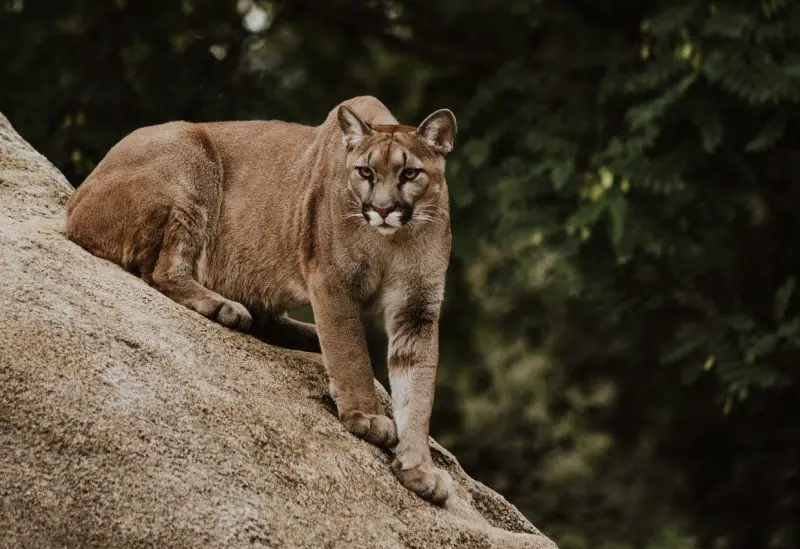Mountain lions, also known as cougars or pumas, are among the most elusive and fascinating predators of the American West. In Colorado, these big cats roam vast mountainous and forested areas, silently shaping the ecosystem through their predatory behavior.
One of the most intriguing questions wildlife enthusiasts and researchers often ask is whether mountain lions in Colorado hunt alone or in groups. This curiosity opens the door to deeper exploration into their social behavior, survival strategies, and role within the ecosystem.
In this article, we will explore the hunting habits of mountain lions in Colorado, examining how their solitary or occasional group behaviors align with their instincts, habitats, and the natural dynamics of the region.
Understanding the Nature of Mountain Lions

Mountain lions are solitary predators by nature, often regarded as the quintessential solitary carnivores. Their stealth and agility make them highly effective hunters, but unlike pack animals such as wolves, mountain lions rely heavily on solitary hunting tactics. These cats prefer to stalk and ambush their prey rather than chase in long pursuits or hunt in coordinated groups.
Mountain lions are highly territorial animals. Each individual maintains a territory that can span tens to hundreds of square miles, depending on habitat quality and prey availability. These territories often overlap between males and females but rarely among males, as males aggressively defend their boundaries against rivals. This territoriality reinforces their solitary lifestyle and influences how and when they hunt.
The Solitary Hunting Strategy of Mountain Lions in Colorado
When it comes to hunting, mountain lions in Colorado almost always hunt alone. The solitary hunting approach aligns perfectly with their physical and behavioral adaptations. Mountain lions are ambush predators; they rely on camouflage, patience, and explosive bursts of speed to capture prey. Their body structure — powerful limbs, retractable claws, and sharp teeth — supports stealth and close-range attacks rather than group coordination.
Hunting alone allows mountain lions to remain stealthy and avoid detection by their prey. Prey species such as deer, elk, and smaller mammals are highly alert and sensitive to signs of danger. If multiple mountain lions hunted together, their combined presence would likely alert prey early, reducing the chances of a successful kill.
In Colorado’s rugged terrain, the solitary hunting tactic is especially advantageous. The mountainous landscape, dense forests, and varied elevations provide perfect cover for a single mountain lion to stalk prey quietly. These cats often hunt at dawn, dusk, or night, further enhancing their ability to ambush under the cover of darkness.
Occasional Exceptions: When Do Mountain Lions Hunt in Groups?
Though rare, there are circumstances under which mountain lions may be seen hunting or moving in pairs or small family groups. These exceptions primarily involve mothers and their cubs or brief cooperative interactions between related individuals.
Female mountain lions raise their kittens alone, typically staying with them for up to two years. During this time, the mother often hunts to feed her growing cubs, and it is not uncommon to observe the family unit traveling or hunting in proximity. However, even in this situation, the mother does not hunt cooperatively with the cubs. The cubs learn hunting skills by watching and eventually practicing alone as they grow independent.
Another rare scenario involves temporary tolerance or loose associations between related adults, such as a mother and an adult offspring. But these are exceptions rather than the rule, and mountain lions generally maintain solitary behavior to reduce competition for food.
Ecological Reasons for Solitary Hunting
The solitary hunting behavior of mountain lions in Colorado has important ecological implications. As apex predators, mountain lions help maintain the balance of herbivore populations, which in turn affects vegetation and the overall health of ecosystems.
Hunting alone reduces intraspecific competition, allowing individual mountain lions to maximize their hunting efficiency within their territories. This territorial behavior prevents overpopulation of mountain lions in any given area, ensuring sustainable predator-prey dynamics.
Furthermore, solitary hunting supports the mountain lion’s role as a stealth predator. The success of their hunts depends largely on surprise and close contact. Group hunting could disrupt this delicate balance by increasing noise, scent, and movement, which would alert prey.
Comparing Mountain Lions with Other Big Cats
Unlike lions in Africa, which are known for their social pride structures and cooperative hunting, mountain lions have evolved as solitary hunters. The difference in social behavior between mountain lions and lions stems largely from habitat, prey availability, and evolutionary history.
African lions live in open savannahs where cooperative hunting provides an advantage in taking down large prey such as buffalo and zebra. In contrast, mountain lions inhabit dense forests and mountainous regions where stalking and ambush are more effective than open chases or group strategies.
Similarly, other solitary big cats like tigers and leopards share the mountain lion’s preference for solitary hunting. These species rely on individual strength, stealth, and territoriality to secure food and reproductive success.
How Mountain Lions Hunt: Techniques and Prey Selection in Colorado
Mountain lions employ various hunting techniques tailored to their environment and prey. In Colorado, their prey ranges from mule deer and elk to smaller mammals like rabbits and rodents. Mountain lions primarily hunt medium to large ungulates but are opportunistic feeders that adapt to available prey.
The typical hunting process involves silent stalking from a concealed position, slowly closing the distance to within a striking range. Using their powerful hind legs, mountain lions launch themselves in a sudden burst of speed, aiming to deliver a lethal bite to the neck or throat of their prey. This swift, close-range attack minimizes the struggle and increases the likelihood of a kill.
Because mountain lions hunt alone, each individual must rely on its own knowledge of terrain, prey behavior, and timing. They often revisit successful hunting grounds and use well-concealed resting spots to ambush prey.
The Role of Scavenging and Kill Sharing
Although mountain lions predominantly hunt solo, there are instances where scavenging or kill sharing occurs. After a successful kill, a mountain lion may feed in solitude or occasionally tolerate the presence of a sibling, offspring, or mate for brief periods.
Unlike pack animals that share kills as a social behavior, mountain lions are more likely to defend their kills aggressively against other predators or conspecifics. However, in the case of a mother with cubs, she may allow her kittens to feed on her kill before consuming the remainder alone.
Scavengers such as coyotes, bobcats, and vultures often benefit from mountain lion kills, but these are external interactions rather than cooperative group hunting behaviors.
Human Interaction and Observation of Mountain Lion Behavior in Colorado
Observing mountain lions in the wild is notoriously difficult due to their elusive nature and solitary habits. Most wildlife enthusiasts and researchers rely on trail cameras, GPS collars, and indirect evidence such as tracks and scat to study these cats.
In Colorado, sightings of multiple mountain lions together are rare and typically involve mother-cub groups or mating pairs. The solitary hunting behavior means that encounters with more than one adult mountain lion in the same location are uncommon.
Human development and expanding settlements have increased encounters between people and mountain lions, but these animals continue to exhibit secretive, solitary habits to avoid confrontation.
Conservation and Management Implications of Mountain Lions’ Solitary Hunting
Understanding that mountain lions hunt alone has significant implications for their conservation and management. Wildlife biologists consider solitary hunting behavior when designing management plans, estimating population sizes, and assessing habitat requirements.
Solitary territoriality means that each mountain lion requires a large area to thrive, making habitat fragmentation a critical concern. Ensuring connectivity between habitats allows mountain lions to maintain healthy populations without excessive conflicts.
Moreover, conservation efforts emphasize minimizing human disturbance during key hunting periods to preserve the mountain lion’s natural behaviors. Public education about their solitary and elusive nature helps reduce unwarranted fear and promotes coexistence.
Conclusion
Mountain lions in Colorado are solitary hunters by instinct and design. Their hunting behavior revolves around stealth, ambush, and individual skill rather than group cooperation. Although exceptions occur when mothers raise cubs or temporary associations happen, these big cats primarily rely on solitary hunting to survive and succeed in the challenging landscapes of Colorado.
Their solitary nature not only defines their role as apex predators but also shapes the ecological balance of the regions they inhabit. By understanding and respecting their solitary hunting habits, humans can better appreciate these majestic creatures and contribute to their conservation.
FAQs About Mountain Lions Hunting Alone in Colorado
Do mountain lions in Colorado ever hunt in groups?
Mountain lions in Colorado almost always hunt alone. Group hunting is extremely rare and generally only occurs in the context of a mother raising her cubs. Even in these situations, the cubs typically observe or feed but do not actively assist in coordinated hunts. Adult mountain lions are solitary by nature and maintain independent hunting territories.
Why do mountain lions prefer to hunt alone?
Mountain lions are ambush predators that depend on stealth and surprise. Hunting alone allows them to move silently through rugged terrain and avoid alerting their prey. Group hunting would reduce their efficiency by increasing noise and visibility, which could cause prey to flee before the mountain lion can strike.
Are there exceptions to solitary hunting behavior?
Yes, exceptions exist. A mother mountain lion will stay with her cubs for up to two years, during which time she hunts to feed them. Occasionally, siblings or related individuals may tolerate each other briefly around a kill, but these are temporary associations and not examples of true group hunting behavior.
How does solitary hunting affect their territory size?
Because they hunt alone and do not share food, mountain lions need large territories to find sufficient prey. In Colorado, a single male may control a territory up to 200 square miles or more. Females usually require smaller ranges, but still defend their hunting grounds from other females.
Do mountain lions compete with other predators in Colorado?
Yes, mountain lions compete with black bears, coyotes, and occasionally wolves for territory and food. However, their solitary hunting style and nocturnal behavior help them avoid direct conflict. They are also known to cache their kills to reduce the risk of scavengers stealing their food.






